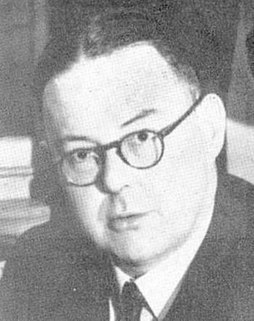A military dictatorship is a dictatorship wherein the military exerts complete or substantial control over political authority.
The Country Studies are works published by the Federal Research Division of the United States Library of Congress, freely available for use by researchers. No copyright is claimed on them. Therefore, they have been dedicated to the public domain and can be copied freely, though not all the pictures used therein are in the public domain. The Country Studies Series presents a description and analysis of the historical setting and the social, economic, political, and national security systems and institutions of countries throughout the world. The series examines the interrelationships of those systems and the ways they are shaped by cultural factors.
This is a survey of the postage stamps and postal history of Bechuanaland Protectorate.

Francisco Eppens Helguera or Francisco Eppens was a Mexican artist known for his paintings, murals and sculptures of images and scenes distinctly Mexican. He also achieved international fame for his award winning modern designs for Mexican postage and revenue stamps (1935–1953) and for his 1968 redesign of the Mexican coat of arms, still used today on Mexican government documents, coins and the national flag.

The first postage stamps of Bhutan were issued in 1962, the same year that the first motorable road was opened. Before that there was a mail delivery system in place for official mail using mail runners, and between 1955 and 1962 revenue stamps were accepted as payment for internal mail. With the opening up of Bhutan in the early 1960s, a formal postal system was introduced. The American entrepreneur Burt Todd assisted in establishing a postage stamp program in the country and Bhutan became known for the unusual designs and materials of its stamps which were chosen by Todd specifically to attract attention. With the assistance of the Indian postal advisor Dr. K. Ramamurti, who was in Bhutan from 1964 to 1968, a proper postal organization and infrastructure was set up under the leadership of a young Bhutanese officer Mr. Lam Penjor, who became the Director of the Department of Posts and Telegraphs.

Bolivia was formerly known as Upper Peru and became an independent republic on 6 August 1825. It has produced its own postage stamps since 1867. Stamps from Bolivia are marked as Correos de Bolivia. Tensions between Chile and Bolivia have influenced both countries' stamps and postal history.

El Salvador became independent from Spain in 1821. It has produced its own stamps since 1867.

Guatemala has been independent from Spain since 1847. The first adhesive stamps of Guatemala were revenue stamps issued in 1868. The first postage stamps were produced in 1871.

The first revenue stamps in the United States were used briefly during colonial times, among the most notable usage involved the Stamp Act. Long after independence, the first revenue stamps printed by the United States government were issued in the midst of the American Civil War, prompted by the urgent need to raise revenue to pay for the great costs it incurred. After the war ended however, revenue stamps and the taxes they represented still continued. Revenue stamps served to pay tax duties on items that came under two main categories, Proprietary and Documentary. Proprietary stamps paid tax duties on goods like alcohol and tobacco, and were also used for various services, while Documentary stamps paid duties on legal documents, mortgage deeds, stocks and a fair number of other legal dealings. Proprietary and Documentary stamps often bore these respective designations, while in several of the issues they shared the same designs, sometimes with minor variations. Beginning in 1862 the first revenue stamps were issued, and would continue to be used for another hundred years and more. For the first twelve years George Washington was the only subject featured on U.S. revenue stamps, when in 1875 an allegorical figure of Liberty finally appeared. Revenue stamps were printed in many varieties and denominations and are widely sought after by collectors and historians. Revenue stamps were finally discontinued on December 31, 1967.

Martin Erler was a German philatelist who was an expert on the revenue stamps of Germany who with John A. Norton wrote the only comprehensive catalogue of German revenue stamps.

Revenue stamps of Malta were first issued in 1899, when the islands were a British colony. From that year to 1912, all revenue issues were postage stamps overprinted accordingly, that was either done locally or by De La Rue in London. Postage stamps also became valid for fiscal use from 1912 to 1913, so no new revenues were issued until 1925–30, when a series of key type stamps depicting King George V were issued. These exist unappropriated for use as general-duty revenues, or with additional inscriptions indicating a specific use; Applications, Contracts, Registers or Stocks & Shares. The only other revenues after this series were £1 stamps depicting George VI and Elizabeth II. Postage stamps remained valid for fiscal use until at least the 1980s.

Governing authorities in the Philippines have issued a variety of stamps for internal revenue taxes and other fiscal taxes since 1856. Prior to 1856, internal revenues were collected via stamped paper. Revenue stamps for the Philippines were issued by the Spanish East Indies government (1856–1898), the revolutionary government of the First Philippine Republic (1898–1901), the Insular Government of the United States (1901–1935), the government of the Commonwealth of the Philippines, the Philippine Executive Commission (1942–44) and the Republic of the Philippines (1946–present).
Joseph L. Ross is a philatelist who has specialised in the revenue stamps of South America. Ross has also been a prolific philatelic author, compiling or updating a large number of revenue stamp catalogues and writing numerous articles in philatelic journals. His catalogue of Uruguay revenues, for instance, is the first since Forbin's world catalogue of 1915 and starts where that one finished.
Fortunato Quispe Mendoza is a Dominican Republic professional football manager. He has degrees in Political Science, Media Education mention Social Sciences and Physical Education mention Futbol.











